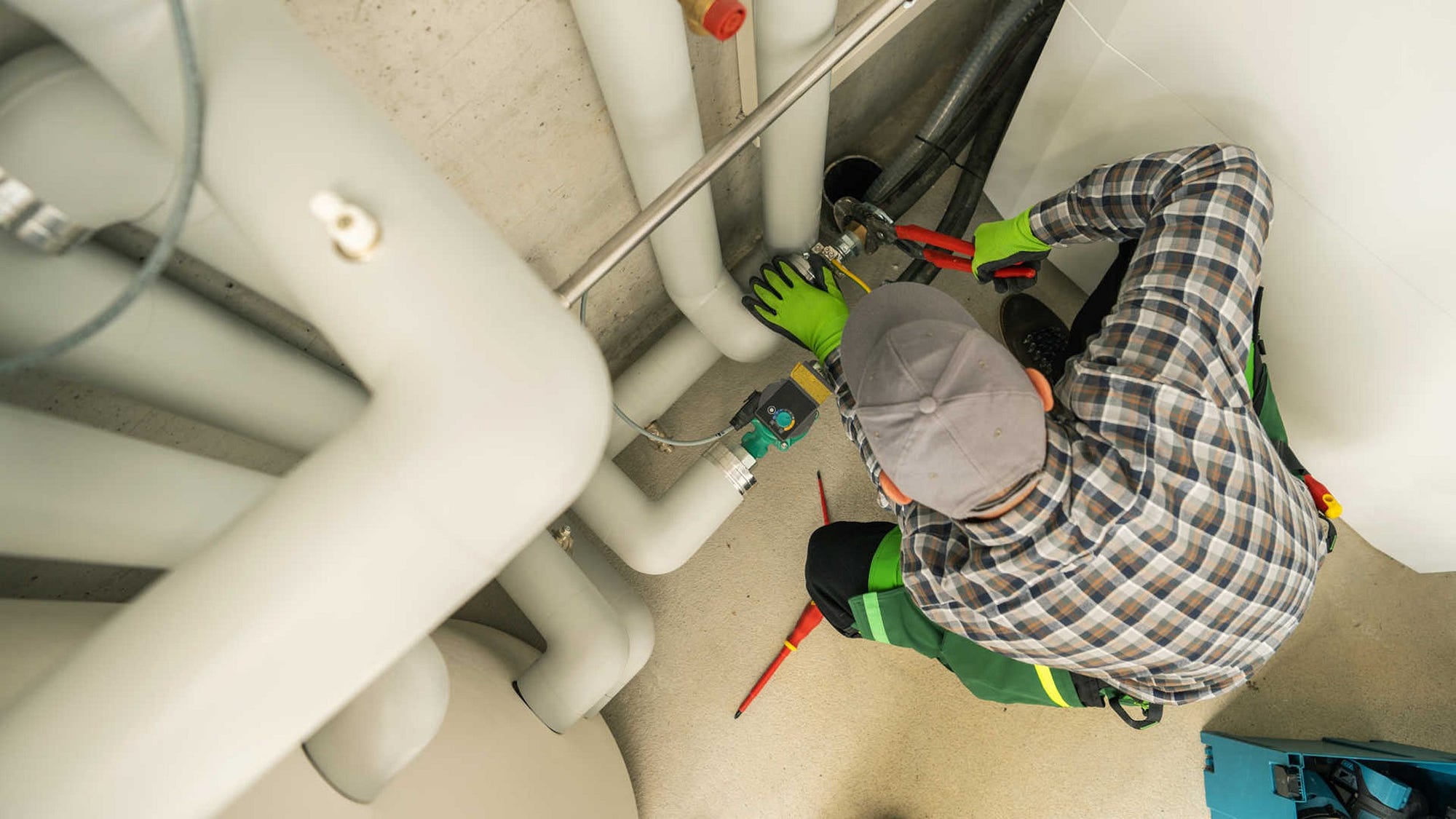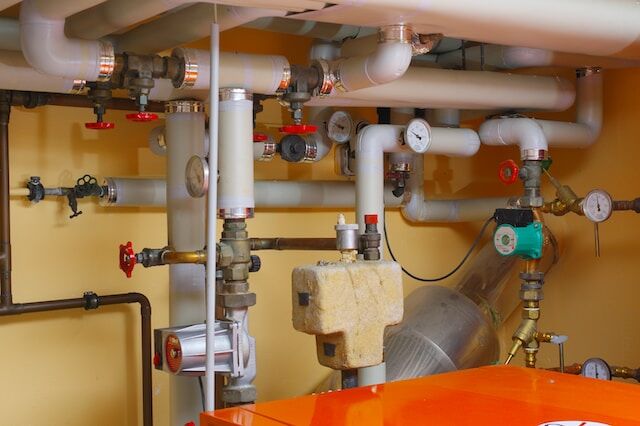Exploring the Basics of Home Plumbing: A Beginner's Tutorial
Exploring the Basics of Home Plumbing: A Beginner's Tutorial
Blog Article
Are you currently in search of info around Understanding the Basics of Your Home's Plumbing System?

Plumbing is a vital facet of any type of home, responsible for providing tidy water for alcohol consumption, cooking, and bathing, as well as getting rid of wastewater securely. Comprehending the fundamentals of home plumbing is essential for every house owner to make sure appropriate maintenance, troubleshooting, and, if required, repair work. In this beginner's guide, we'll cover the fundamental ideas of home plumbing to assist you become more familiar with just how it functions.
Supply Of Water System
The supply of water system brings clean water right into your home from a metropolitan water resource or a private well. It contains a major water line that links to your home's plumbing system, usually situated underground. A water meter measures the quantity of water taken in, while a shut-off shutoff allows you to regulate the flow of water right into your home.
Plumbing Fixtures
Plumbing fixtures are gadgets that provide water to various parts of your home and include sinks, taps, toilets, showers, tubs, and appliances such as dish washers and cleaning machines. Each component is connected to the water system system through pipelines and installations and might have its shut-off valve for maintenance or emergency situations.
Water Heating Unit
The water heating system is accountable for heating water for residential usage, consisting of bathing, food preparation, and cleansing. Common sorts of water heaters consist of tank-type water heaters, tankless (on-demand) hot water heater, and heatpump water heaters. The hot water heater is connected to the water system and delivers warm water to plumbing fixtures as required.
Drain System
The water drainage system gets rid of wastewater from your home and carries it away to a sewage treatment center or septic system. It consists of a network of pipelines, fittings, and fixtures that move wastewater from plumbing components to the major sewage system line or septic tank. Correct drainage is important to prevent obstructions, backups, and sewage leaks.
Air flow System
The ventilation system aids maintain proper atmospheric pressure and prevent sewer gases from entering your home. Air vent pipelines, likewise called air vent stacks, prolong from plumbing fixtures to the roofing, permitting sewer gases to get away safely outside. Ventilation pipelines also allow air to go into the drain system, promoting smooth wastewater flow and avoiding suction or vacuum results.
Common Plumbing Tools
Having the right tools accessible is vital for doing fundamental plumbing fixings and upkeep jobs. Typical plumbing tools include adjustable wrenches, pipe wrenches, pliers, pipeline cutters, hacksaws, bettors, augers (or drainpipe serpents), and Teflon tape. Having these tools readily available can aid you take on small plumbing problems effectively.
Fundamental Plumbing Repair Work
While some plumbing repair work may call for specialist help, lots of common issues can be addressed with standard do it yourself methods. Knowing how to repair a leaky faucet, unblock a drainpipe, replace a commode flapper, or fix a dripping showerhead can conserve you money and time on plumbing repair work.
Conclusion
Recognizing the fundamentals of home plumbing is important for every single house owner to preserve a safe, practical, and reliable plumbing system. By acquainting on your own with the supply of water system, plumbing fixtures, water drainage system, ventilation system, typical plumbing tools, and basic repairs, you can with confidence attend to minor plumbing concerns and guarantee your home's plumbing system operates efficiently.
Plumbing for Beginners: A Comprehensive Guide
If you’re a beginner when it comes to plumbing, don’t worry; you’re not alone. Plumbing may seem intimidating, but with the right knowledge and a little practice, you can handle many common plumbing issues on your own. In this comprehensive guide, we will demystify the world of plumbing for beginners, providing you with the basic knowledge and skills needed to tackle common plumbing problems and even take on some DIY plumbing projects.
The Importance of Basic Plumbing Knowledge for Beginners:
First and foremost, basic plumbing knowledge gives you a solid foundation. It helps you grasp the key concepts and terminology that are essential in this field. By learning the basics, you’ll be able to build upon that knowledge and tackle more complex plumbing tasks in the future.
Having a basic understanding of plumbing also enables you to handle common issues that may arise in your home. Picture this: a leaky faucet or a clogged drain. With some basic plumbing knowledge, you’ll have the confidence to troubleshoot and fix these problems on your own. It saves you from unnecessary expenses and the hassle of waiting for a professional to arrive.
As a beginner, learning the basics of plumbing empowers you to take care of your own home. It gives you a sense of independence and self-reliance. You’ll no longer have to rely solely on professionals for every small issue that pops up. Instead, you can handle many tasks yourself, saving time and money in the process.
Remember, everyone starts as a beginner. Embrace the learning process and take small steps to expand your plumbing knowledge. There are plenty of online resources, tutorials, and even local workshops that talk about plumbing for beginners.
Essential Tools for Plumbing for Beginners
As you start your plumbing journey, having the right tools in your toolbox is crucial. Let’s explore some of the must-have tools:
Adjustable Wrench:
This versatile tool is a staple in any plumber’s toolbox. It allows you to tighten or loosen nuts and bolts of various sizes. Make sure to have an adjustable wrench with a comfortable grip.
Pipe Wrench:
A pipe wrench is specifically designed for gripping and turning pipes. It has serrated jaws that provide a strong grip, making it easier to loosen or tighten threaded pipes and fittings.
Plunger:
The plunger is a simple yet effective tool for clearing clogged drains and toilets. It creates suction when you push and pull, helping to dislodge blockages. Keep a good-quality plunger handy for those unexpected clogs.
Pipe Cutter:
When it comes to cutting pipes, a pipe cutter is your go-to tool. It creates clean, precise cuts without damaging the pipe. Look for a pipe cutter that can handle the pipe sizes you’re working with.
Hacksaw:
A hacksaw is useful for cutting through pipes, screws, and other materials. It’s a versatile tool that can handle different cutting tasks. Remember to use a blade suitable for cutting metal.
Tape Measure:
Accurate measurements are crucial in plumbing. A tape measure allows you to measure pipe lengths, distances, and dimensions accurately. Opt for a sturdy tape measure that extends a good length.
Pliers:
Pliers come in handy for various tasks, such as gripping, bending, and cutting. Slip-joint pliers with adjustable jaws are great for gripping pipes, nuts, and bolts.

I came across that piece of writing about Plumbing Basics For Every Home: The HomeTriangle Guide while surfing around the search engines. Do you know about someone else who is truly interested in the subject? Please feel free to share it. Many thanks for your time invested reading it.
Request A Quote Report this page